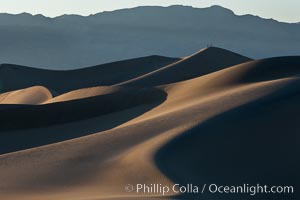
Tiny hikers atop Sand Dunes in Death Valley National Park, California. Near Stovepipe Wells lies a region of sand dunes, some of them hundreds of feet tall.
Location: Stovepipe Wells, Death Valley National Park, California
Image ID: 15577
Location: Stovepipe Wells, Death Valley National Park, California
Image ID: 15577
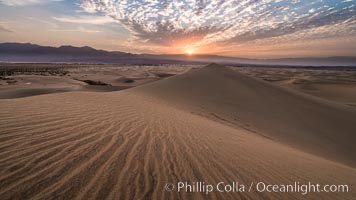
Mesquite Dunes sunrise, dawn, clouds and morning sky, sand dunes.
Location: Stovepipe Wells, Death Valley National Park, California
Image ID: 28689
Location: Stovepipe Wells, Death Valley National Park, California
Image ID: 28689
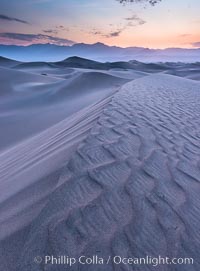
Mesquite Dunes sunrise, dawn, clouds and morning sky, sand dunes.
Location: Stovepipe Wells, Death Valley National Park, California
Image ID: 28680
Location: Stovepipe Wells, Death Valley National Park, California
Image ID: 28680
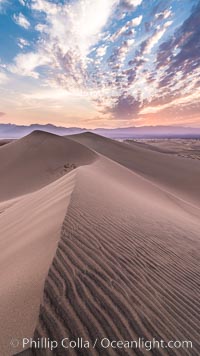
Mesquite Dunes sunrise, dawn, clouds and morning sky, sand dunes.
Location: Stovepipe Wells, Death Valley National Park, California
Image ID: 28688
Location: Stovepipe Wells, Death Valley National Park, California
Image ID: 28688
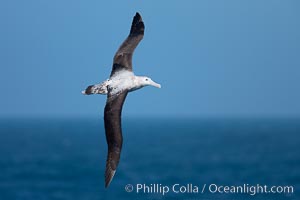
Wandering albatross in flight, over the open sea. The wandering albatross has the largest wingspan of any living bird, with the wingspan between, up to 12' from wingtip to wingtip. It can soar on the open ocean for hours at a time, riding the updrafts from individual swells, with a glide ratio of 22 units of distance for every unit of drop. The wandering albatross can live up to 23 years. They hunt at night on the open ocean for cephalopods, small fish, and crustaceans. The survival of the species is at risk due to mortality from long-line fishing gear.
Species: Wandering albatross, Diomedea exulans
Location: Southern Ocean
Image ID: 24071
Species: Wandering albatross, Diomedea exulans
Location: Southern Ocean
Image ID: 24071
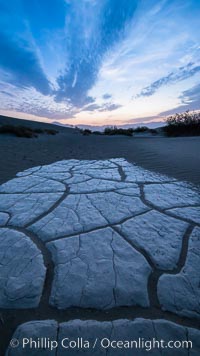
Hardened mud playa and sand dunes, dawn, Mesquite dunes.
Location: Stovepipe Wells, Death Valley National Park, California
Image ID: 28679
Location: Stovepipe Wells, Death Valley National Park, California
Image ID: 28679

La Jolla Cove only breaks on really big swells. Giant surf and big waves nail Southern California, December 21, 2005.
Location: La Jolla Cove, California
Image ID: 14813
Location: La Jolla Cove, California
Image ID: 14813
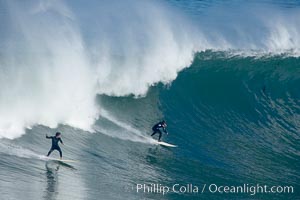
La Jolla Cove only breaks on really big swells. Giant surf and big waves nail Southern California, December 21, 2005.
Location: La Jolla Cove, California
Image ID: 14815
Location: La Jolla Cove, California
Image ID: 14815
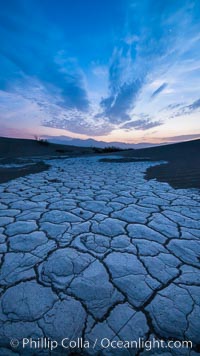
Hardened mud playa and sand dunes, dawn, Mesquite dunes.
Location: Stovepipe Wells, Death Valley National Park, California
Image ID: 28678
Location: Stovepipe Wells, Death Valley National Park, California
Image ID: 28678
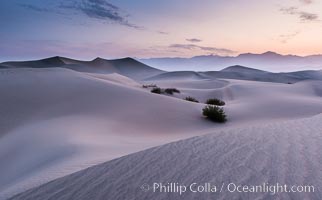
Mesquite Dunes sunrise, dawn, clouds and morning sky, sand dunes.
Location: Stovepipe Wells, Death Valley National Park, California
Image ID: 28681
Location: Stovepipe Wells, Death Valley National Park, California
Image ID: 28681
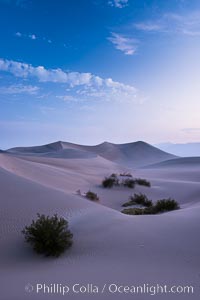
Mesquite Dunes sunrise, dawn, clouds and morning sky, sand dunes.
Location: Stovepipe Wells, Death Valley National Park, California
Image ID: 28682
Location: Stovepipe Wells, Death Valley National Park, California
Image ID: 28682
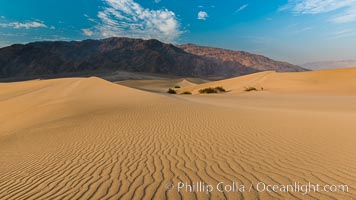
Mesquite Dunes sunrise, Death Valley.
Location: Stovepipe Wells, Death Valley National Park, California
Image ID: 28690
Location: Stovepipe Wells, Death Valley National Park, California
Image ID: 28690
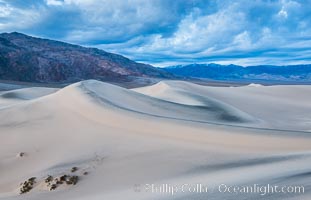
Mesquite Dunes at sunrise, dawn, clouds and morning sky, sand dunes.
Location: Mesquite Dunes, Death Valley National Park, California
Image ID: 30476
Location: Mesquite Dunes, Death Valley National Park, California
Image ID: 30476
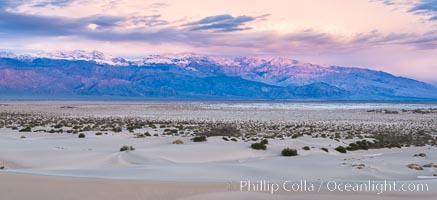
Mesquite Dunes at sunrise, dawn, clouds and morning sky, sand dunes.
Location: Mesquite Dunes, Death Valley National Park, California
Image ID: 30477
Location: Mesquite Dunes, Death Valley National Park, California
Image ID: 30477
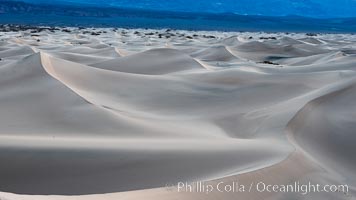
Mesquite Dunes at sunrise, dawn, clouds and morning sky, sand dunes.
Location: Mesquite Dunes, Death Valley National Park, California
Image ID: 30478
Location: Mesquite Dunes, Death Valley National Park, California
Image ID: 30478
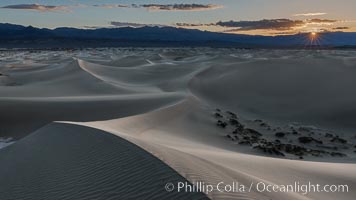
Mesquite Dunes at sunrise, dawn, clouds and morning sky, sand dunes.
Location: Mesquite Dunes, Death Valley National Park, California
Image ID: 30479
Location: Mesquite Dunes, Death Valley National Park, California
Image ID: 30479
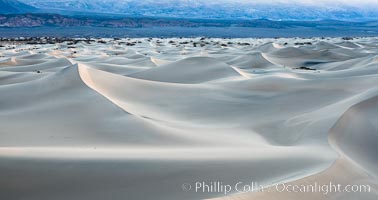
Mesquite Dunes at sunrise, dawn, clouds and morning sky, sand dunes.
Location: Mesquite Dunes, Death Valley National Park, California
Image ID: 30480
Location: Mesquite Dunes, Death Valley National Park, California
Image ID: 30480
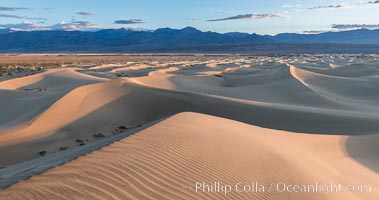
Mesquite Dunes at sunrise, dawn, clouds and morning sky, sand dunes.
Location: Mesquite Dunes, Death Valley National Park, California
Image ID: 30481
Location: Mesquite Dunes, Death Valley National Park, California
Image ID: 30481
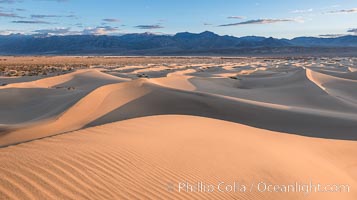
Mesquite Dunes at sunrise, dawn, clouds and morning sky, sand dunes.
Location: Mesquite Dunes, Death Valley National Park, California
Image ID: 30482
Location: Mesquite Dunes, Death Valley National Park, California
Image ID: 30482
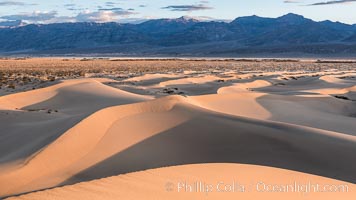
Mesquite Dunes at sunrise, dawn, clouds and morning sky, sand dunes.
Location: Mesquite Dunes, Death Valley National Park, California
Image ID: 30483
Location: Mesquite Dunes, Death Valley National Park, California
Image ID: 30483
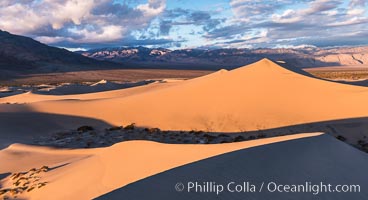
Mesquite Dunes at sunrise, dawn, clouds and morning sky, sand dunes.
Location: Mesquite Dunes, Death Valley National Park, California
Image ID: 30484
Location: Mesquite Dunes, Death Valley National Park, California
Image ID: 30484
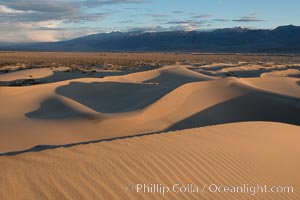
Mesquite Dunes at sunrise, dawn, clouds and morning sky, sand dunes.
Location: Mesquite Dunes, Death Valley National Park, California
Image ID: 30485
Location: Mesquite Dunes, Death Valley National Park, California
Image ID: 30485

Mesquite Dunes at sunrise, dawn, clouds and morning sky, sand dunes.
Location: Mesquite Dunes, Death Valley National Park, California
Image ID: 30486
Panorama dimensions: 4553 x 16396
Location: Mesquite Dunes, Death Valley National Park, California
Image ID: 30486
Panorama dimensions: 4553 x 16396
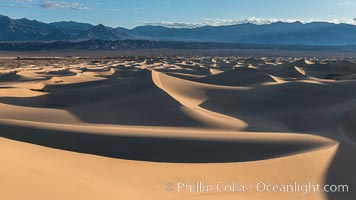
Mesquite Dunes at sunrise, dawn, clouds and morning sky, sand dunes.
Location: Mesquite Dunes, Death Valley National Park, California
Image ID: 30487
Location: Mesquite Dunes, Death Valley National Park, California
Image ID: 30487
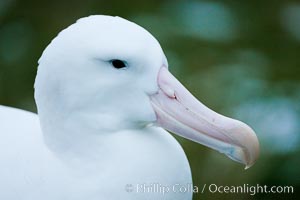
Wandering albatross, on nest and the Prion Island colony. The wandering albatross has the largest wingspan of any living bird, with the wingspan between, up to 12' from wingtip to wingtip. It can soar on the open ocean for hours at a time, riding the updrafts from individual swells, with a glide ratio of 22 units of distance for every unit of drop. The wandering albatross can live up to 23 years. They hunt at night on the open ocean for cephalopods, small fish, and crustaceans. The survival of the species is at risk due to mortality from long-line fishing gear.
Species: Wandering albatross, Diomedea exulans
Location: Prion Island, South Georgia Island
Image ID: 24385
Species: Wandering albatross, Diomedea exulans
Location: Prion Island, South Georgia Island
Image ID: 24385
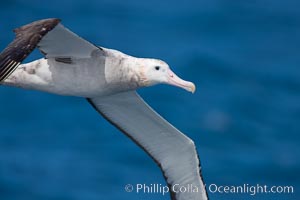
Wandering albatross in flight, over the open sea. The wandering albatross has the largest wingspan of any living bird, with the wingspan between, up to 12' from wingtip to wingtip. It can soar on the open ocean for hours at a time, riding the updrafts from individual swells, with a glide ratio of 22 units of distance for every unit of drop. The wandering albatross can live up to 23 years. They hunt at night on the open ocean for cephalopods, small fish, and crustaceans. The survival of the species is at risk due to mortality from long-line fishing gear.
Species: Wandering albatross, Diomedea exulans
Location: Southern Ocean
Image ID: 24070
Species: Wandering albatross, Diomedea exulans
Location: Southern Ocean
Image ID: 24070
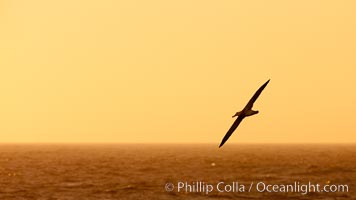
Wandering albatross in flight, over the open sea. The wandering albatross has the largest wingspan of any living bird, with the wingspan between, up to 12' from wingtip to wingtip. It can soar on the open ocean for hours at a time, riding the updrafts from individual swells, with a glide ratio of 22 units of distance for every unit of drop. The wandering albatross can live up to 23 years. They hunt at night on the open ocean for cephalopods, small fish, and crustaceans. The survival of the species is at risk due to mortality from long-line fishing gear.
Species: Wandering albatross, Diomedea exulans
Location: Southern Ocean
Image ID: 24092
Species: Wandering albatross, Diomedea exulans
Location: Southern Ocean
Image ID: 24092
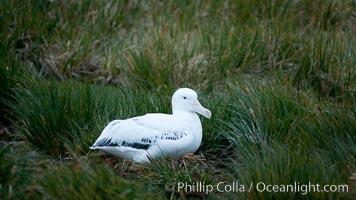
Wandering albatross, on nest in the Prion Island colony. The wandering albatross has the largest wingspan of any living bird, with the wingspan between, up to 12' from wingtip to wingtip. It can soar on the open ocean for hours at a time, riding the updrafts from individual swells, with a glide ratio of 22 units of distance for every unit of drop. The wandering albatross can live up to 23 years. They hunt at night on the open ocean for cephalopods, small fish, and crustaceans. The survival of the species is at risk due to mortality from long-line fishing gear.
Species: Wandering albatross, Diomedea exulans
Location: Prion Island, South Georgia Island
Image ID: 24394
Species: Wandering albatross, Diomedea exulans
Location: Prion Island, South Georgia Island
Image ID: 24394
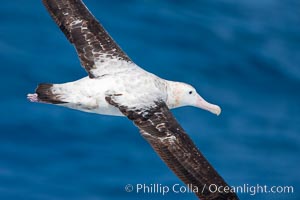
Wandering albatross in flight, over the open sea. The wandering albatross has the largest wingspan of any living bird, with the wingspan between, up to 12' from wingtip to wingtip. It can soar on the open ocean for hours at a time, riding the updrafts from individual swells, with a glide ratio of 22 units of distance for every unit of drop. The wandering albatross can live up to 23 years. They hunt at night on the open ocean for cephalopods, small fish, and crustaceans. The survival of the species is at risk due to mortality from long-line fishing gear.
Species: Wandering albatross, Diomedea exulans
Location: Southern Ocean
Image ID: 24087
Species: Wandering albatross, Diomedea exulans
Location: Southern Ocean
Image ID: 24087
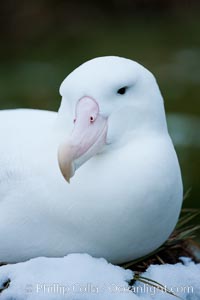
Wandering albatross, on nest and the Prion Island colony. The wandering albatross has the largest wingspan of any living bird, with the wingspan between, up to 12' from wingtip to wingtip. It can soar on the open ocean for hours at a time, riding the updrafts from individual swells, with a glide ratio of 22 units of distance for every unit of drop. The wandering albatross can live up to 23 years. They hunt at night on the open ocean for cephalopods, small fish, and crustaceans. The survival of the species is at risk due to mortality from long-line fishing gear.
Species: Wandering albatross, Diomedea exulans
Location: Prion Island, South Georgia Island
Image ID: 24428
Species: Wandering albatross, Diomedea exulans
Location: Prion Island, South Georgia Island
Image ID: 24428